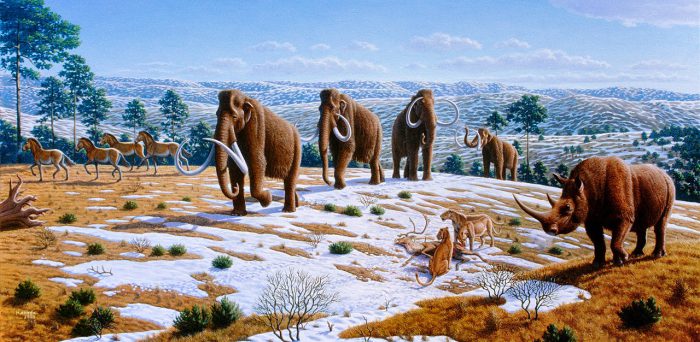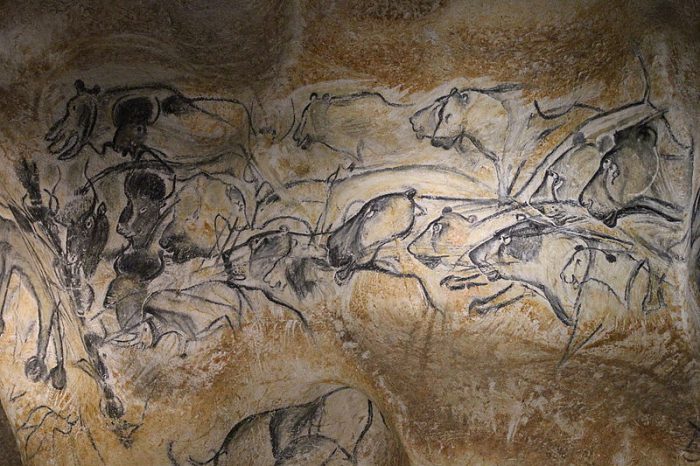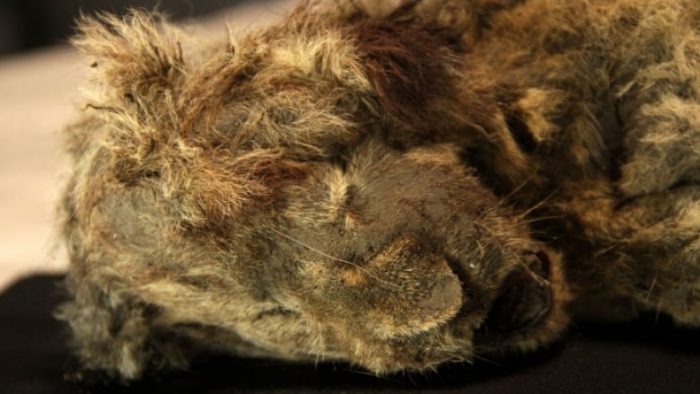As we've written about before, the thawing permafrost is revealing all kinds of remarkably preserved animals from the last Ice Age. From furry mammals to microscopic worms and bacteria, creatures from tens of thousands of years ago are being released from long frozen ground.
When an ancient wild dog puppy was found, we were blown away by its appearance. But a recently discovered cave lion cub is perhaps the most well preserved prehistoric mammal ever discovered.
Despite being 28,000 years old, it is stunningly intact. Named Sparta, she is covered in golden fur and even still has the whiskers around her nose. Her internal organs have also been perserved—there may even be remnants of mother's milk inside her body!
A pair separated by thousands of years

This 2008 painting depicts cave lions along with other Ice Age animals in what is now northern Spain. (Mauricio Antón/Wikiemedia Commons)
Sparta is actually one of two cubs found in an area of the Siberian tundra in 2018. The other—who has been nicknamed Boris—was discovered only 15 metres (50 feet) away. But they are not related.
According to research, Boris is likely around 15,000 years older than Sparta. Which might be partly why Boris isn't in as great shape as Sparta. It's just a remarkable coincidence that the pair were discovered in the same remote permafrost cave.
But one thing these two do have in common is that they both died at around 1 or 2 months of age. Though it is sad to think about, these specimens managed to 'live on' in a different way. Sparta, in particular, has the potential to teach scientists so much about the cave lion and what made it a different species to modern lions.
And it could even do something more remarkable than that.
Can we bring cave lions back to life?

This famous cave painting in Chauvet Cave, France, was made around 17,000 years ago. It shows cave lions hunting bison. (Wikimedia Commons)
Sparta and Boris have soft tissue remains. And that means it could be possible to use their remains to sequence the animal's genome (like a blueprint for the animals). And that means that maybe, just maybe, one day ...
We could bring cave lions back to life!
Whoa, whoa, whoa. Slow down! Though not necessarily impossible, it would be very difficult. For an understanding into why this would be so challenging, watch this General KnOWLedge video that we did on whether or not dinosaurs could ever be brought back to life.
And you can also watch these videos to get an up close look at Sparta and how she was found. Even if new research doesn't bring prehistoric cave lions back, it will certainly make our understanding of them stronger than ever.
A well-preserved cave lion cub found in Siberia's permafrost is 28,000 years old, according to researchers. The Siberian Simba, nicknamed Sparta, was one of two baby cave lions found in 2017 and 2018 by mammoth tusk hunters. https://t.co/gCw5WB4P0N pic.twitter.com/j7lEXpW2Vd
— CNN (@CNN) August 6, 2021
 Meet Sparta, the cave lion cub. (Love Dalén)
Meet Sparta, the cave lion cub. (Love Dalén)










Why did it take so long for the lion cub and it’s story to appear on the news/internet? I guess it does take a long time to take it out of the permafrost, experiment on it and check out all we can about it…